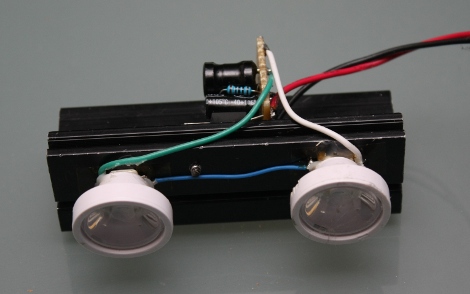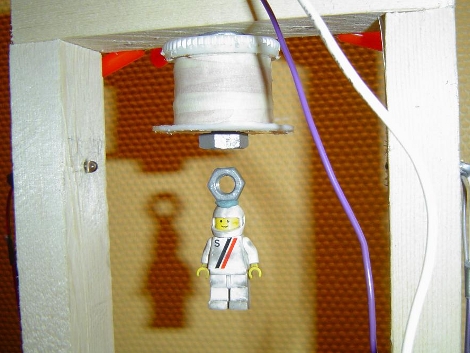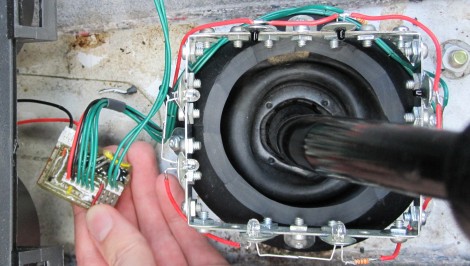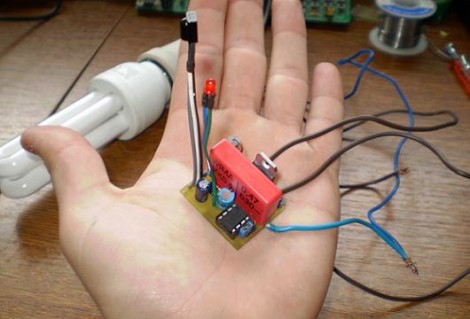
Having experienced quite a bit of trouble getting the Nintendo Wii remotes to work reliably with his home theater projector, [Sprite_TM] designed his own sensor bar replacement. If you’re not familiar, the Wii remotes have an infrared camera in the tip that sense two IR LEDs in the sensor bar that resides above or below your television. The problem is that if you’re too far away, the points of light are not where the remote expects them to be and the cursor will not perform as expected. Since this is a huge projected display it’s no surprise that the player is further away from the screen than the system was designed for.
[Sprite_TM’s] solution was to build a projection system for the two IR points. The unit in the picture above is a driver circuit with two IR emitters mounted on a heat sink, each with its own reflector. The reflected beams are shined through a Fresnel lens and projected on the same wall as the TV image. The viewer will not be able to see this light as it’s in a longer wavelength than the visible spectrum. But the Wii remote performs beautifully now and the replacement sensor bar is happily mounted out of sight above the projector.















